Plenary Speakers
| ISAF: | Jürgen Rödel | ||||||||
| Institute of Materials Science, Technische Universitat Darmstadt, Germany | |||||||||
| Jürgen Rödel is Professor in Materials Science at TU Darmstadt (Germany), distinguished visiting professor at Tsinghua University and specially appointed professor at Tokyo Tech. He obtained a Diplom in Materials Science from Universitat Erlangen-Nurnberg and a Ph.D. from UC Berkeley. His current interests include the development of lead-free piezoceramics and the concept of mechanically tuned conductivity. He (co-)authored 290 publications. He received both the DFG research award for young scientists (Heinz-Maier-Leibnitz-Prize) and for senior scientists (Gottfried Wilhelm Leibniz-Prize), as well as the IEEE ferroelectrics recognition award. He is also member of the German National Academy of Science and Engineering (acatech). | |||||||||
| Lead-free Piezoceramics: From Basic Science to Application It is now apparent that there will not be one encompassing material solution to replace lead zirconate titanate (PZT). Rather, a number of base material compositions show promise to be equivalent to PZT in select applications. In this talk first the scientific achievements will be reviewed and new scientific understanding will be highlighted. Then select recent discoveries will be discussed, for example the use of NBT-based composites for high-power applications. Then the chances for transfer into application will be discussed. In fact, this has already started with several international companies making progress in research and application of lead-free piezoceramics. The reasons are two-fold: Environmental drive and legislative efforts but also the opportunities in select applications to develop lead-free piezoceramics better than PZT. For the latter aspect I will discuss areas, where lead-free piezoceramics offer advantages like the ability to co-sinter with nickel, a higher fracture toughness, a higher fracture strength, a better ability at high-power conditions, a higher thermal conductivity and others. The talk will end with recommendations for future research both in basic science as well as in transfer into application. |
|||||||||
| FMA: | Takashi Eshita | ||||||||
| FUJITSU SEMICONDUCTOR LIMITED, Japan. | |||||||||
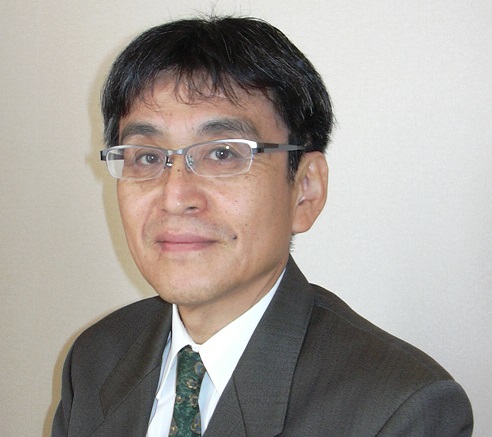 |
Takashi Eshita joined FUJITSU LIMITED in 1986 and has been worked for FRAM development since 1995, significantly contributing to the success of the FRAM mass-production at Fujitsu. He is currently a Senior Director of System Memory Company at FUJITSU SEMICONDUCTOR LIMITED and a Visiting Professor at Wakayama University. He was received several prominent awards, such as Japan’s Medal of Honor with Purple Ribbon in 2015, Commendation for Science and Technology by Japan's Minister of Education, Culture, Sports, Science and Technology; Prizes for Science and Technology in 2014, and Fellow Award from the Japan Society of Applied Physics in 20 | ||||||||
| Development of highly reliable FRAM and its IoT applications The way of our living has been dramatically changed since the advent of the Internet of Things (IoT) which allows physical devices to collect data from their environment and transfer it over a network to another device and/or to a mainstream computing system. In the IoT, a huge amount of data generated by the edge devices is processed and optimized by "the edge computing" before transferring to the main stream computing systems. The edge devices, often deployed in the remote location away from the power supply, are operated by unstable self-powering such as the environmental energy harvesting. Piezoelectric materials including ferroelectric and/or pyroelectric materials significantly play an important role both for the edge devices and the mainstreaming computing systems. Those materials are used in the various kind of sensors and the energy harvesting devices implemented within the edge devices. It is important for the memories used in the edge devices to operate with low energy consumption and high reliability because of unstable and low power supply. The ferroelectric RAM (FRAM) has not only good electric performance of low-power consumption and high-speed read/write, but also superior reliability of higher endurance and lower bit-error rate than other non-volatile memories. Thus, FRAM is suitable for various kinds of the edge devices. Although the scalability has been a downside of the FRAM for a long time, a ferroelectric-gate field-effect transistors (FeFET) is promising to overcome that problem because FeFET dimension is almost determined by its gate length. HfO2-based ferroelectric materials also can contribute to the cell-size reduction of the FRAM because of their good compatibility with the Si technology. In the other hand, the mainstream computing systems are confronted with speed and power problems because of the limit of transistor scaling (limit of "Moore's law") and sharp increase in the amount of networking data. A negative-capacitance field-effect transistor (NC-FET) with a ferroelectric material as a gate insulator has been proven to improve switching speed and power consumption of transistors. Brain-like computing is also one of the candidates to improve the performance of the mainstream computing systems. It is attractive for the artificial synapsis made from the ferroelectric-tunnel-junction (FTJ) memristors to apply to the brain-like computing. In our presentation, we describe our development for the highly reliable FRAM which have been commercialized since 1999 after overcoming ferroelectric degradation problem in the conventional Si technology and also talk about the future trends of FRAM focusing on the IoT applications. |
|||||||||
| AMF: | Chan-Ho Yang | ||||||||
| KAIST, Korea | |||||||||
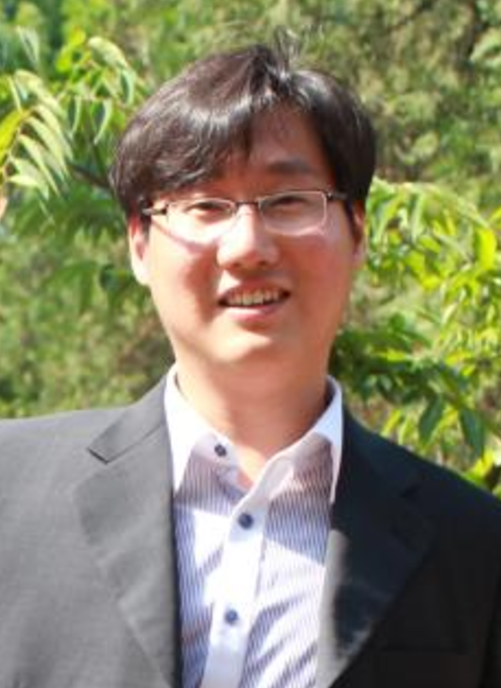 |
Chan-Ho Yang is KAIST Endowed Chair Associate Professor in the Department of Physics at Korea Advanced Institute of Science and Technology (KAIST). He is also an affiliated faculty at KAIST Institute for the NanoCentury and the Director of the Creative Research Initiative Center for Lattice Defectronics. His research interests are in epitaxial growth and characterization of functional transition metal oxide thin films, especially, related with multiferroics and correlated electronic phenomena, and now he is also studying collective ionic defect behaviors in crystalline solids and ferroelectric topological structures by using visualization techniques such as angle-resolved piezoresponse force microscopy. | ||||||||
| Lattice Defectronics : the Key Ingredient of Future Condensed Matter Physics Topological defects in matter are a topic of intense interest in contemporary condensed matter physics and materials science. Vortices and skyrmions in ferroic materials have received considerable attention as topologically protected quasi-particles that carry energy and information. These energetically quantized and spatially confined excitations behave collectively to form highly non-trivial structures called topological textures that are characterized by conserved quantities such as the winding number. In particular, vortices in electrically polarized media ? ferroelectrics have seized attention recently due to their high storage density, high prospects for optical activity, and new quasi-particles as electrical counterparts to magnetic skyrmions. Despite the identification of electrically non-trivial structures such as flux-closure structures and polar vortex arrays, this fast growing field in ferroelectrics is still at an early stage of research. A new idea for mobile electric topological defects beyond the observations of static textures is presently required. Moreover, basic principles and generic mechanisms for the design and synthesis of materials/systems that admit of electric topological structures need to be elaborated. Furthermore, a direct real-space detection technique should be devised to observe the behavior of electric vortices at nanoscale spatial resolution in a non-destructive manner, which will contribute significantly to the emerging area. In this presentation, we will introduce our recent efforts to tackle the challenges with configurable topological textures in strain-graded ferroelectric nanoplates. More specifically, we will show that an epitaxial ferroelectric square nanoplate of bismuth ferrite as a model material enables five discrete levels for the ferroelectric topological invariant of the entire system. The total winding number of the topological texture can be configured from ?1 to 3 by selective non-local electric switching of the quadrant domains. By using angle-resolved piezoresponse force microscopy in conjunction with local winding number analysis, we directly identify the existence of vortices and anti-vortices, observe pair creation and annihilation, and manipulate the net number of vortices. Our findings offer a useful concept for the stabilization and control of ferroelectric vortices for multi-level topological defect memory. |
|||||||||
| AMEC: | Yanfeng Chen | ||||||||
| Nanjing University, China | |||||||||
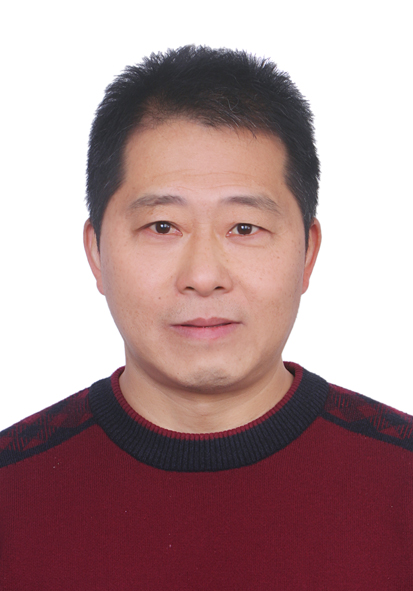 |
Prof. Yan-Feng Chen received his PhD degree at Northwest Polytechnic University, Xi’an China, in 1990. From 1993 to 2013, he served as a founding member and chair of the Department of Materials Sciences and Engineering at Nanjing University. From 2001 to 2002, he was a visiting scholar at Massachusetts Institute of Technology (MIT). He is currently the director of National Laboratory of Solid-State Microstructures and Professor of Materials Physics in Nanjing University. His research interests have mainly focused on artificial materials of photonic crystals, acoustic crystals and meta-materials. He has published over 150 peer-reviewed papers, and been granted 40 Chinese patents and 2 US patents. He has presented more than 15 invited talks at international conferences. He was rewarded the second-class award of National Nature Science of China. | ||||||||
|
Engineering Ferroelectrics with Artificial Microstructures to Realize Sound Effects Ferroelectrics is characteristic of ferroelectric domains which play a key role in determining their performances, for example, piezoelectric, nonlinear optic, electro- optic, and dielectric effects. In this talk, we present some results by engineering ferroelectrics with domains and second phases with desired microstructures to manipulate exotic effects beyond their uniform and single bulks. Firstly, by inversely poling ferroelectric domains, we prepared multi-ferroelectric domains in virgin single domain LiTaO3, which results in ultrasonic delay-lines and resonators operating in the several hundred MHz. Secondly, by designing and preparing metallic pillars with honeycomb lattice on the surface of LiNbO3 single crystals, we realized surface phononic graphene integrated with SAW devices, which demonstrated some novel effects such as a relativistic phenomenon of Dirac quasiparticle-like transport, that is, pseudo-diffusion at the Dirac point, and gave rise to a thickness-independent temporal beating for transmitted pulses, an analogue of Zitterbewegung effects, and ultraslow surface acoustic wave due to dynamical multiple scattering from strong scatters or impurities, as well. Thirdly, by introducing semiconducting ZnO particles into the relaxor ferroelectric 0.94Bi0.5Na0.5TiO3-0.06BaTiO3 matrix, we deferred the thermal depolarization, even rendered depolarization-free ZnO-Bi0.5Na0.5TiO3 0-3-type composites. These works demonstrates that such these microstructures as ferroelectric domains, periodic scattering lattices, and secondary phases, give rise of ferroelectrics to the exotic effects beyond uniform single crystalline ferroelectrics, and open a new ways to lead ferroelectrics to find new applications. |
|||||||||
| PFM: | Patrycja Paruch | ||||||||
| University of Geneva, Switzerland | |||||||||
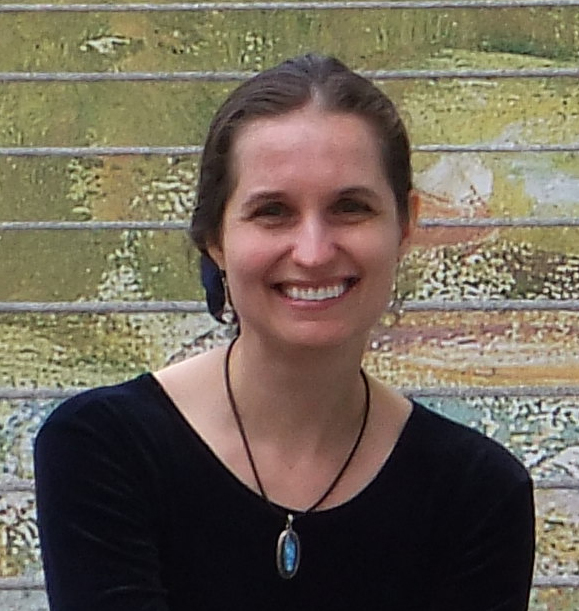 |
Patrycja Paruch was born in Poland and grew up in Zimbabwe. She obtained a magna
cum laude BA in Physics from Harvard University in 2000, followed by a PhD in Physics
from the University of Geneva in 2004, and post-doctoral research at Cornell University. Patrycja joined the University of Geneva in 2007. Her group (ferro.unige.ch) uses scanned force microscopy to investigate the novel functional properties of individual ferroelectric domain walls, in addition to their static and dynamic behaviour as pinned elastic interfaces. Within this broader framework, the group has recently begun to also explore biological interfaces such as proliferating epithelial cell fronts. They are also developing combined ferroelectric-carbon nanotube devices for nanoelectronics and microscopy applications, and studying the effects of strain and interfacial coupling in multiferroic epitaxial superlattice structures. Non-scientifically, she boxes, climbs rock and ice, keeps carnivorous plants and herbivorous turtles, and is somewhat asymptotically working towards a pilot license. | ||||||||
|
Pushing at the walls: PFM insights into the fundamental and functional properties of ferroelectric domain boundaries Over the last decade, significant effort in the ferroic community has been devoted to understanding the fundamental and functional behaviour of ferroelectric domain walls. These intrinsically nanoscale features, separating regions with different polarisation orientation, provide an excellent model system for the rich physics of pinned elastic interfaces whose behaviour is key to understanding and controlling domain switching dynamics, size, shape and stability under varying temperature or environmental conditions. In addition, domain walls can present emergent physical properties and a local internal structure quite different from those of the parentphase, making them potentially useful as active components in future miniaturised electronic devices. Piezoresponse force microscopy (PFM) and other scanning probe microscopy techniques have been an invaluable tool in these studies, allowing nanoscale access to the ferroelectric, conductive, mechanical, and magnetic properties of domain walls, and mapping their static and dynamic behaviour over an extensive range of various key parameters such as the strength and duration of applied electric fields, temperature, or relative humidity. In this lecture, I will review the progress in our understanding of domain wall motion, roughening and stability within the statistical framework of pinned elastic interfaces, highlighting more recent work exploring potential applications. I will also discuss the recent discoveries of novel functional properties, focusing in particular on the the presence of Neel and Bloch configurations with rotation of the polarisation at domain walls, which can give rise to unexpected electromechanical responses. |
|||||||||
| IFAAP: | Jacob Jones | ||||||||
| North Carolina State University, USA | |||||||||
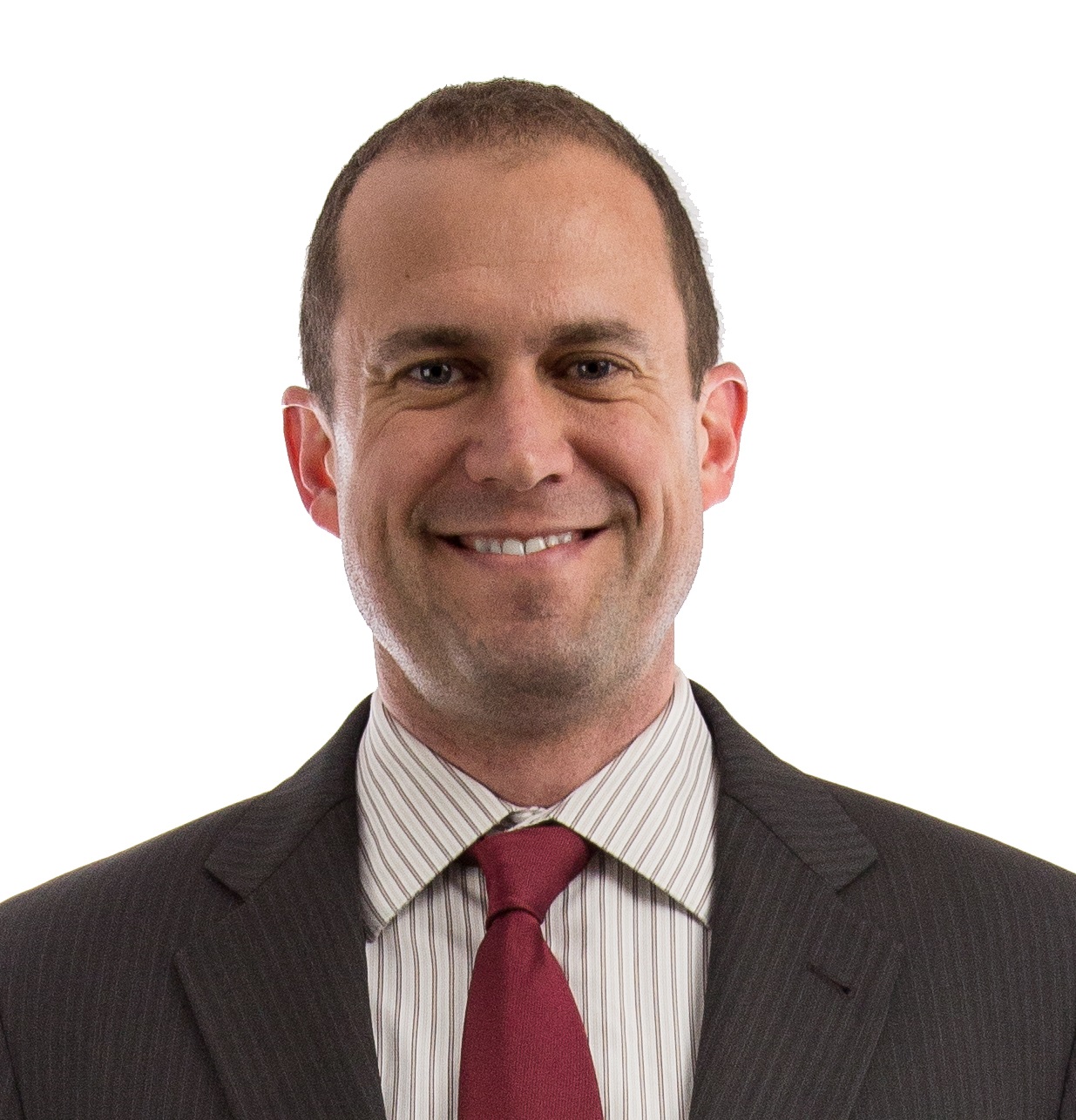 |
Jacob L. Jones is a Professor of Materials Science and Engineering, University Faculty Scholar, and Director of the Analytical Instrumentation Facility at North Carolina State University. He is also Director and Principal Investigator of the Research Triangle Nanotechnology Network. Jones has BS, MS, and PhD degrees from Purdue University and has published over 180 papers on topics of functional materials since 2004. He has received numerous awards including an NSF CAREER award, a Presidential Early Career Award for Scientists and Engineers, the IEEE UFFC Ferroelectrics Young Investigator Award, and several international educator and undergraduate mentor awards. | ||||||||
New ways to determine and describe ferroelectric structures from diffraction and scattering The importance of structure-property relationships in materials research cannot be overstated. At the crystallographic level, the structure relates directly to nearly all physical properties ranging from thermal expansion and elastic compliance to dielectric polarization, piezoelectricity, and pyroelectricity. There is great complexity in the ferroelectric crystal structures investigated today with examples including disordered atomic displacements, chemical disorder, octahedral tilting, and incommensurate modulations. A growing emphasis on in situ characterization, e.g. crystallographic study during application of electric fields or mechanical stress, further increases the challenges changes in determining and describing the structural features of interest. In this talk, I will focus on the local structure of ferroelectrics and describe the application of the Pair Distribution Function (PDF) for characterizing these features. PDFs can be determined from X-ray or neutron total scattering measurements and provide information about structure which is invisible in Bragg diffraction. The interesting local structures in a variety of compounds and solid solutions measured by our group, our collaborators, and other researchers will be described. We will also present the development of in situ PDF for determining how local structures of ferroelectrics respond to an electric field, providing critical insight to understanding of dynamic structure-property relationships. The electric-field-induced local structures of BaTiO3 (BT), Na0.5Bi0.5TiO3 (NBT), and solid solutions of BT-Bi(Me)O3, Pb(Zr,Ti)O3, and Pb(Mg1/3Nb2/3)O3-PbTiO3 will be presented and discussed. Different local structure responses to field will be shown and include piezoelectricity, polarization rotation, ionic polarizability, rearrangement of disordered dipoles, and phase transitions. The latter three mechanisms cannot be measured using Bragg diffraction. |
|||||||||
| Previous Page | Top Page |




